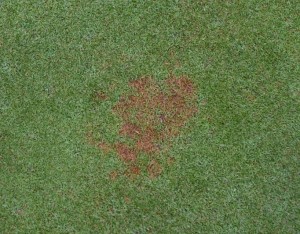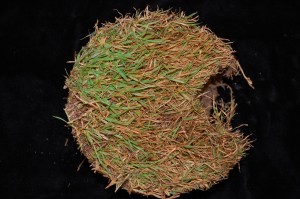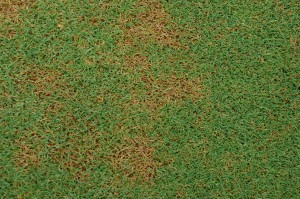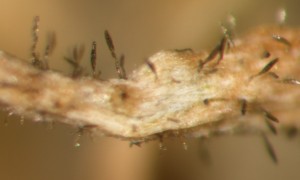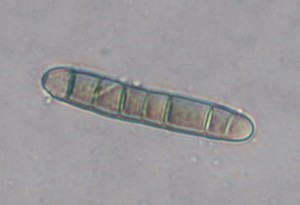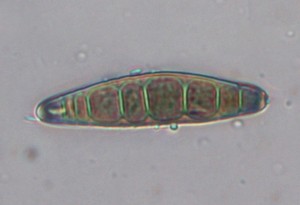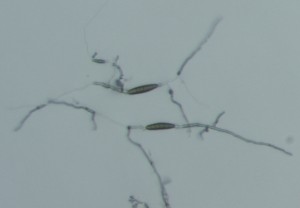Red leaf spot of creeping bentgrass is a poorly understood leaf spot disease in turfgrass. Almost all golf course superintendents think they have it at one point or another, but nobody ever really does.
Caused by the fungus Drechslera erythrospila, most folks consider red leaf spot to act just like our familiar leaf spot diseases in the blues, ryes, and fescues. Generally speaking, these other leaf spot diseases, which are each caused by a unique species of the fungus Drechslera, occur during the spring. We think of leaf spot disease activity from April to about mid-May. Typically, April and May are pretty cold in the Northeast and many bentgrass cultivars respond to the cold by turning all sorts of red and purple. Superintendents see the discoloration, remember their leaf spot lecture from turf school, and think “bentgrass + red leaves = red leaf spot.” I say not!
Drechslera erythrospila is a different animal from the other common Drechslera species affecting turfgrass due to one simple detail – the fungus is active at warmer temperatures. Red leaf spot is a warm, wet-weather disease that is not prominent until the onset of summer (isn’t that today?). Red leaf spot causes oval-shaped, reddish leaf spots and rotten crowns on individual plants, and an overall general thinning of the turf stand reminiscent of brown blight in perennial ryegrass or leaf spot and melting out of Kentucky bluegrass. Diseased bentgrass on golf courses may also appear drought stressed and can thin into dry, reddish brown irregular patches.
Interestingly enough, there is another issue that confuses our red leaf spot conundrum even more. A related fungus, Bipolaris sorokiniana, also causes a disease in bentgrass that clearly resembles red leaf spot. Bipolaris sorokiniana has a much larger host range and is very common on perennial ryegrass fairways. At any rate, infections by Bipolaris sorokiniana in bentgrass are indistinguishable from those caused by Drechslera erythrospila. Should you care? Maybe not, both diseases look and act the same, occur during the same conditions, and have similar management strategies. You might not have to care about the specifics of an individual fungus to do your job, but I do!
And here is how I know who is who; under the microscope each of these fungi are quite distinct. Conidia (asexual spores) of Drechslera erythrospila are generally clear (hyaline) and cylindrical. Bipolaris sorokiniana conidia, on the other hand, are dark (dematiaceous) and taper toward the ends like a cigar. In the past, both of these critters were in the same genus, Helminthosporium, but in 1959 they were split apart. One of the factors considered in the split was how the conidia germinate. Bipolaris germinates from the poles (bipolar get it?), while all Drechslera species germinate from every cell. Pretty cool, don’t you think? Oh and one more thing for your next cocktail party, Charles Drechsler originally described all these fungi into the genus Helminthosporium in 1935.
To manage leaf spot diseases; avoid high nitrogen fertility and excessive thatch. Water deeply and infrequently to avoid drought stress and wet leaves. Renovate with improved cultivars. Where necessary, apply fungicides preventively. The following materials have performed well in research trials: azoxystrobin, fludioxonil, fluoxystrobin, iprodione, mancozeb, penthiopyrad, pyraclostrobin, and vinclozalin. Looking at this list, can you see why these diseases are pretty rare in the summer on your golf course putting green?
